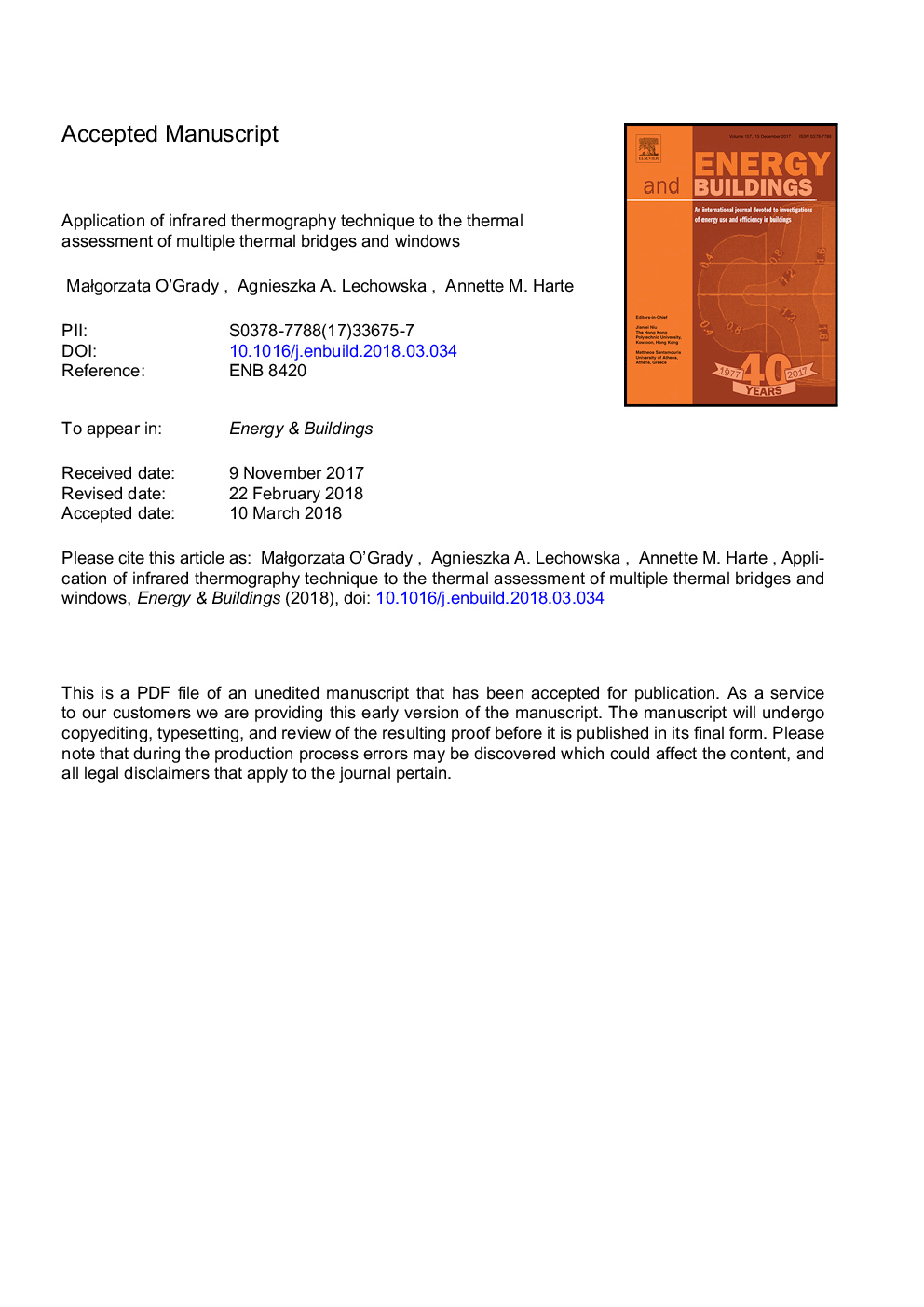| Article ID | Journal | Published Year | Pages | File Type |
|---|---|---|---|---|
| 6728142 | Energy and Buildings | 2018 | 35 Pages |
Abstract
A major contribution to the global trend in reducing energy consumption can be made by improving the thermal performance of buildings. Minimization of heat loss via the building envelope is key to maximizing building energy efficiency. The building envelope contains different types of thermal bridging that must be accounted for while assessing the overall building envelope thermal performance. Multiple thermal bridges commonly occur and the distance between them determines the degree to which they interact thermally. To avoid overestimation of the linear thermal transmittance, it is important to account for interaction effects. Complex multiple thermal bridging occurs in window systems. The thermal performance of windows depends not only on the window performance itself but also on its installation into the wall. This study demonstrates an application of the quantitative infrared thermography technique to evaluate the heat lost via multiple thermal bridging. It is shown that using this methodology, the heat loss via multiple thermal bridges can be easily estimated in an existing building envelope, without any knowledge of its internal structure or material properties. For windows, it is demonstrated that jointly assessing the additional heat loss through the window and due to the installation of the window into the wall is a practical way to determine the actual heat loss caused by the presence of a window. A window thermal transmittance or M-value is introduced to quantify the total additional heat loss through the building element due to the presence of the window. The methodology was validated against experimental measurements taken on different specimens in a hot box device. Results from the thermographic analysis also co-related well with results from finite element heat transfer and computational fluid dynamics simulations.
Related Topics
Physical Sciences and Engineering
Energy
Renewable Energy, Sustainability and the Environment
Authors
MaÅgorzata O'Grady, Agnieszka A. Lechowska, Annette M. Harte,
